In England alone, more than 5 million properties – one in six – are at risk of flooding.
The approaches we have relied on in the past are no longer enough to protect us from the risk of floods that we may experience today and into the future. Now flood risk managers are increasingly drawing upon a greater range of approaches to make us more resilient to flooding.
Wildlife Trusts are leading the way in delivering ‘Natural Flood Management’ Solutions that slow the flow of water through catchments, reducing flood risk downstream. These work alongside other flood risk management techniques to give communities the best options for dealing with flood risk.
Traditional flood defences
Traditional flood defences like flood walls and embankments confine water to river channels, preventing it spilling out in particularly vulnerable areas like towns and cities. In rural areas there can be opportunities to set these embankments back, allowing water to flow out into the floodplain. This creates extra capacity to hold water and prevents it rushing to built-up areas downstream. As a new Environmental Land Management (ELM) Scheme is developed in England based around the concept of ‘public money for public good’, The Wildlife Trusts hope to see farmers and land managers supported to store flood flows on their land, protecting communities downstream from flooding.
Dredging
Dredging is often cited as a key solution to flooding - but widening, deepening or straightening river channels with the aim of conveying water downstream more quickly can sometimes have little positive effect, and is far from risk free, as this blog by the Chartered Institute of Water & Environmental Management (CIWEM) sets out. Any works to river channels must only be undertaken with the support of regulators, and as part of a holistic, well-planned and carefully delivered scheme.
Can dredging help reduce flood risk?
Maintenance dredging in low-lying areas like the Somerset levels is undertaken to clear the build-up of silt from river channels in order to maintain their capacity to hold water. This can have localised benefits, but in extreme floods such as those experienced in the winter of 2013-14, the additional capacity that dredging creates would have been far outweighed by the volume of water resulting from the succession of rainstorms. CIWEM’s report into dredging reveals that modelling found that it could not have prevented flooding and would not have reduced the area or depth of floods, although it would have helped the floodwater to drain away more quickly afterwards, reducing the amount of time that farmland was submerged and properties were flooded.
In other areas, channel engineering can be more of a risk. It can have the effect of moving more water, faster, towards downstream communities - so downstream floods could be more severe, and occur with less warning. Faster flows also have more erosive power and can destabilise riverbanks, bridges and flood defences.
Nature flood management solutions
Techniques that work with natural processes are increasingly recognised as important in helping us to manage the risk of flooding. Our landscape today has been modified to make it less and less permeable through hard paving of urban areas, the conversion of natural habitat to other land uses, and the compaction of intensively-managed agricultural soils. This means that our landscape is less able to capture water by holding it in soils and vegetation, or allowing it to percolate through into permeable rocks below. Instead, water flows overland, quickly collecting in rivers and then overwhelming flood defences that can no longer cope.
It is too costly – both financially and environmentally - to construct ever-higher defences, but there are a plethora of techniques that can help us hold water back in the landscape and lessen the need for those defences. Wildlife Trusts are using a range of these Natural Flood Management measures to slow the flow of water through catchments, including creating and restoring ponds and wetlands, enhancing soils so that they can hold more water, planting trees to slow overland flows and aid infiltration, and constructing woody features, like leaky dams, in channels and floodplains to hold back water.
Putting these solutions into practice
A range of habitats or habitat features help to hold water in the landscape, including:
- Woods, trees, hedgerows: tree cover intercepts rainfall, so it hits the ground with less force and doesn’t run off so readily. Trees take up water for growth, allowing some to evaporate back to the atmosphere, but more importantly their root systems help water to penetrate into the soil, again reducing runoff.
- Ponds, scrapes and wetlands: Wetlands and hollows in the landscape collect water, holding it during wet periods, and releasing it slowly during dry periods.
- Peat bogs; Sphagnum moss can hold 20x its weight in water!
- Wet grasslands: Rough, tussocky grasslands like the Culm grasslands in Devon are extremely effective at storing water. Research has shown that 11 times more water leaves intensively managed grasslands than Culm grasslands during storms, increasing the risk of flooding downstream. Bare soils will allow even more runoff.
Creating and restoring habitats to reduce flood risk
Lancashire Wildlife Trust
Leaky dams
Gloucestershire Wildlife Trust have created 'leaky dams', which trap water behind them and force it to slowly drain through, once the risk of flooding has passed.
Beaver ©David Parkyn
Beavers
Dams are being created by beavers, reintroduced through several Wildlife Trust-led projects, having the same impact as leaky dams.
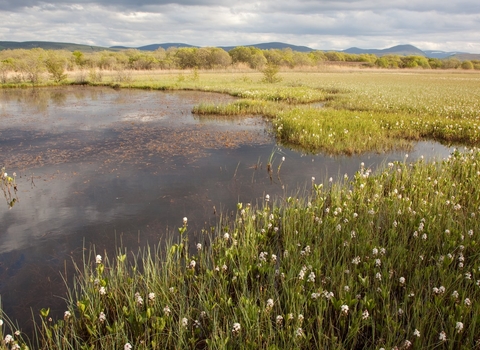
Peter Cairns/2020VISION
Restoring degraded peatland
As part of their peatland restoration programme, Yorkshire Wildlife Trust are working to block historic drainage ditches, known as 'grips', cut into moorland to dry the land for agriculture.
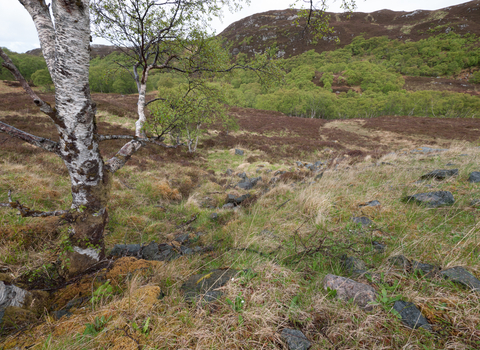
Working in the uplands
In upland habitats, water can be held back on the land before it reaches river systems, and Cumbria Wildlife Trust are working to slow the flow of water from the uplands into rivers downstream.
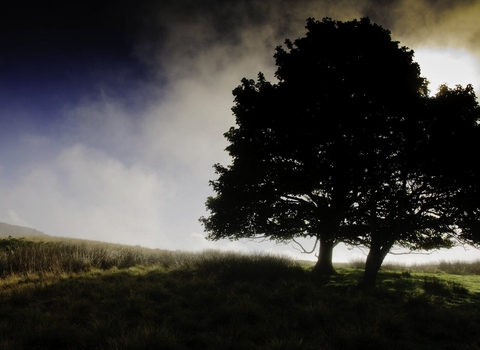
Chris Maguire
Log diverters
In the Peak District, Cheshire Wildlife Trust and partners have placed 'log diverters' in channels, encouraging water out onto the floodplain where it can be temporarily stored. Water either soaks in or returns to the channel when levels subside, depending on the nature of the soil and underlying geology
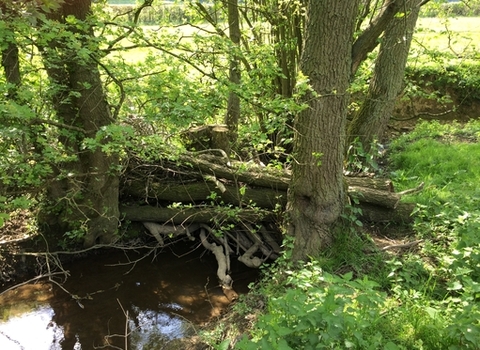
Slow the Flow project - woody debris dam in a Corve Dale brook © Shropshire Wildlife Trust
Slow the Flow
Our landscape is far less able to hold water than it was in the past – much of it is built on or dedicated to intensive agriculture, limiting permeability and meaning water runs off the land rather than being absorbed. Shropshire Wildlife Trust’s Slow the Flow Project works with farmers to aerate fields, improving infiltration and reducing pollution from runoff.
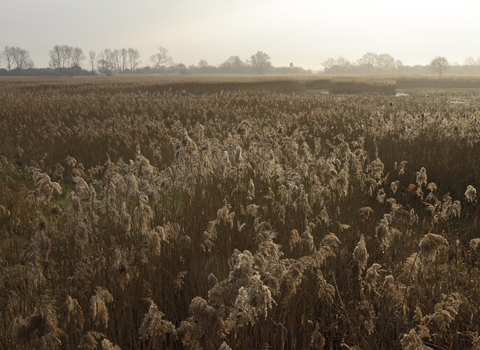
Woodwalton Fen, Great Fen ©Chris Gomersall/2020VISION
The Great Fen Project
Managing natural habitats so they can store or absorb water is important. Cambridgeshire’s Great Fen provides water storage that protects surrounding farmland and communities from flooding, and the Wildlife Trust for Bedfordshire, Cambridgeshire & Northamptonshire are working with farmers to test ways in which the fenland can be sustainably farmed.

Matthew Roberts
Sussex Flow Initiative - Sussex Wildlife Trust
Through the Sussex Flow Initiative, Sussex Wildlife Trust has planted hedgerows and woodland to intercept rainfall and surface run-off, increasing water infiltration into the soil.
